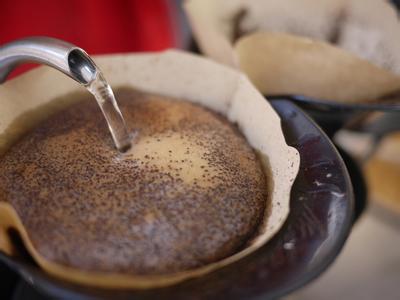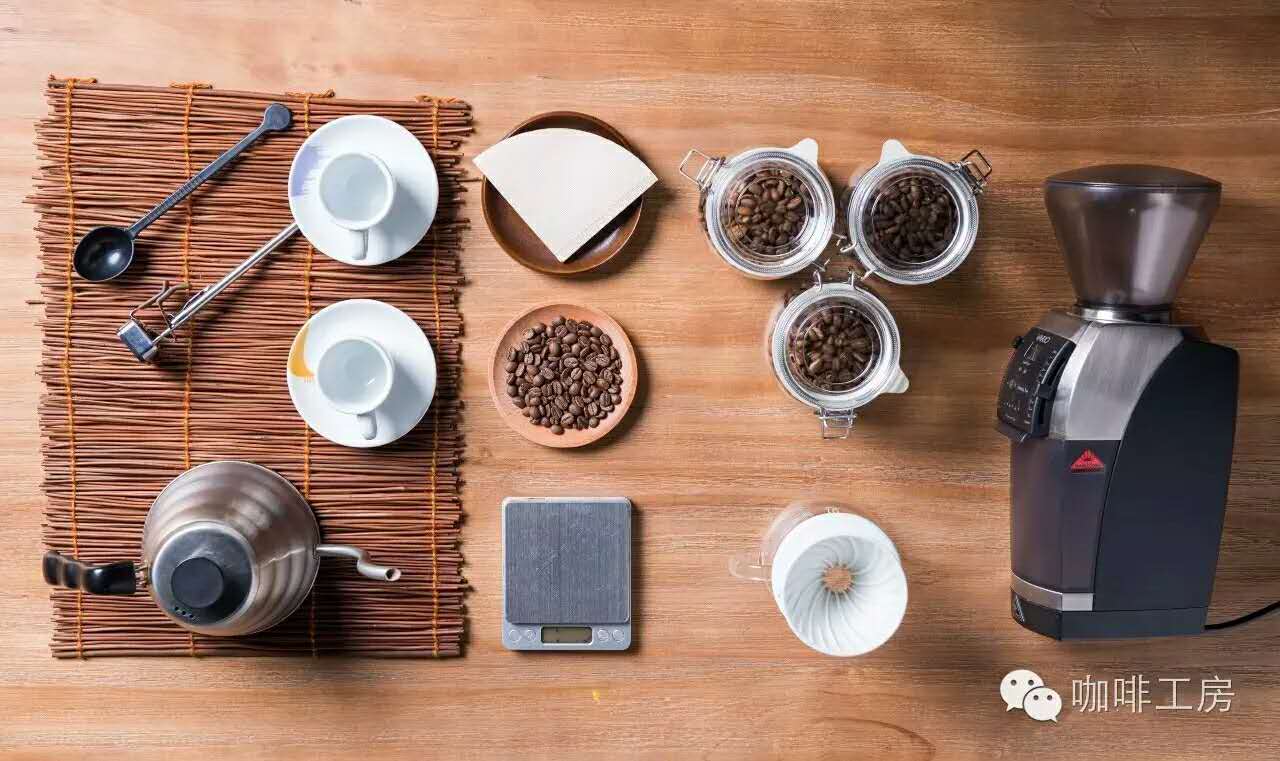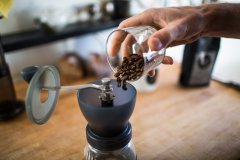Translation of the selected chapters of the Professional baristas Handbook | Chapter 8 the relationship between water and coffee

For professional baristas, please follow the coffee workshop (Wechat official account cafe_style)
Hydrochemistry 101
In the boutique coffee industry, hydrochemistry has not received the attention it deserves. You may have heard the phrase "98.75% of coffee is water", but few people realize how much water affects the remaining 1.25%. Carbon-filtered water may taste good alone, but it doesn't necessarily make your high-priced lots in Kenya taste better than Kenyan FAQ, which is brewed with high-quality water.
Basic knowledge
As we all know, the water used for brewing has to be filtered by carbon and has no peculiar smell, but this is only the basic requirement of high-quality brewing water. In order to get better coffee (or tea, espresso), the water used should be neutral pH, with a certain hardness, alkali content, and total dissolved solid content (TDS).
The following are hydrochemical terms related to coffee making.
Total dissolved solids (TDS): the sum of chemicals less than 2 microns distributed in water, in units of mg/L or ppm.
Hardness: mainly used to measure calcium and magnesium ions soluble in water, although there are other minerals in the water. Unit of measure mg/L or Gerring per gallon.
PH value: the acidity and basicity of the solution is measured by hydrogen ion activity.
Acidity: the pH value of the solution is less than 7.0.
Alkaline: the pH value of the solution is higher than 7.0.
Alkali content: the buffer capacity of the solution to acid, in unit of mg/L.
There are many units of measurement to describe the chemical parameters of water. For simplicity, the author chooses mg/L (mg per liter, or 1/1000000) as the unit of measurement of TDS, hardness and alkali content.
The solution can be alkaline but has a very low alkali content, and vice versa. To make an analogy with politicians, alkaline is regarded as the right, while acidity is the left. The alkalinity is mild and conservative, the acidity is free and radical. (there are no political views here! The amount of alkali can be seen as a stubborn character to resist becoming freer. There is no doubt that a person may be leftist or rightist (acidic or alkaline), but he can still choose to resist becoming freer (high alkali) or accept freer (base alkalinity).
Terminology
"Alkali content" and "alkaline" are not the same thing. "Alkaline" refers specifically to the pH value of the solution between 7.01 and 14, while "alkali content" refers to the buffer capacity of the solution to acid, or the ability to resist becoming more acidic.
The relationship between hardness and alkali content also needs to be clarified. Hardness comes from calcium ions, magnesium ions, and other positive ions (positively charged ions). The alkali content comes from carbonates, bicarbonates, and other negative ions (negatively charged ions). A compound such as calcium carbonate consists of both hardness and alkali content because it contains both calcium (hardness) and carbonate (alkali content), while sodium bicarbonate consists only of alkali content. The general working principle of the water softener is to replace the calcium in the water with sodium, which reduces the hardness, but has no effect on the alkali content.
The scale in the kettle is the product of calcium carbonate precipitation after the hard water is heated. The scale precipitation can reduce the hardness and alkali content of the water. In the long run, scale can seriously damage your espresso machine. In the short term, scale can quickly block thin valves and pipes, especially on pump filters and heat exchangers.
Italian coffee maker manufacturers usually recommend the use of water softeners to protect the machine. A water softener can protect your machine, but it can also destroy your product (see "Water treatment options" in this chapter for details).
Standard for flushing and cooking water
The author recommends using water that meets the following criteria for brewing coffee, tea, and Italian concentrate.

Many industry codes promote slightly higher hardness and TDS than those listed above, and you can make some good coffee using those standards, but I don't recommend it to make espresso because it increases the risk of scale formation.
Theoretically, water with a slightly higher hardness than 80 mg/L will not form scale at the standard Italian concentrated brewing water temperature. But in fact, considering the temperature of the machine and the influence of water treatment system on hardness, I prefer to be overcautious. Especially for pump filters and heat processors, a little scale can greatly affect the performance of these two little things.
Please note that water with a hardness of 70 mg/L will produce scale at the standard temperature of a steam boiler. If you not only want to protect the boiler, but also want to use high-quality water to brew, the only way is to use different hardness water for the two lines of the Italian machine.
Effect of hydrochemistry on coffee flavor
To put it simply, the less "things" have been dissolved in the cooking water, the more "things" the water can dissolve from the coffee powder. If the TDs of the water itself is too high, its solubility is weak and it cannot extract enough soluble matter from the coffee powder. If the TDs of the water is too low, the coffee will have a sharp, coarse flavor, and it will usually be too bright.
Hard water doesn't spoil coffee and espresso products. Even if the water quality used in the coffee machine is very hard, it will not be so hard in actual brewing, because at the standard brewing temperature, many of the substances that make up hardness will precipitate into scale. Unfortunately, scale can damage or affect heat exchangers, throttles, flow meters, valves, heating assemblies, and components connected to these things. Therefore, hard water makes good coffee, but destroys the machine.
The flavor of coffee made by alkaline water or water with high alkali content is dark, burr and insipid. Water with high alkali content will neutralize the acidity of the coffee, resulting in a reduction in the sour taste of the coffee liquid. If the alkali content is too low, the coffee will be too bright and too sour.
The coffee produced by acidic water has high brightness and high balance. But water that is acidic and low in alkali is likely to corrode the kettle.
Water treatment
Equipment for measuring water quality can be obtained from the websites of water filtration companies and aquarium industry suppliers. Every cafe should measure the water quality, whether it's tap water or filtered water. You can buy your own measuring tools or send the water sample to the water treatment company. Please note: the quality of tap water changes all the year round, and the ideal water treatment system had better be adjusted according to the changes of each season.
Water treatment option
According to your measurement results, you can try the following water treatment method.
Carbon filtration: can improve the taste and smell of water, but has little effect on TDS and hardness. Every cafe should install a carbon filter in front of the sediment filter as the first stage of water treatment.
Reverse osmosis: can remove 90% TDS, hardness, alkali content. RO direct effluent is too pure for brewing Italian concentrate, tea and coffee. RO water should be mixed with mineral-rich, carbon-filtered water, or re-mineralized before use. Reverse osmosis systems are a bit expensive and waste a lot of water, but the amount of maintenance is relatively small. TDS or water with too high hardness should be pretreated first, otherwise the strength of the RO film is too strong and it will soon be blocked.
Ion exchange resins: various types, including softeners, dealkalizers and deionizers.
Dealkalizing agent: converts carbonates and bicarbonates into chlorides or hydroxyl groups. It can reduce the alkali content without changing the hardness and mineral content.
Softener: converts calcium ions into sodium ions to reduce hardness. Softeners are usually used to prevent Italian coffee machines from fouling. When making espresso, it is not recommended to soften the hard water completely because it slows the wetting rate of coffee powder particles and causes the espresso to filter for too long, which requires thicker grinding to speed up the flow of water. The sodium bicarbonate (baking soda) produced during the softening process will also condense coffee powder particles, resulting in unstable and uneven filtration. If softening is necessary, soft water should usually be mixed with mineral-rich, carbon-filtered water, or re-mineralized before use. Finally, soft water with a hardness less than 80 mg/L is not recommended.
Deionizer and demineralizer: pure (or almost pure) non-ionic water is made by converting anionic and cationic beds with anionic resins. Like RO water, deionized water should be mixed with mineral-rich, carbon-filtered water, or re-mineralized before being used to make coffee.
Re-mineralizer: add minerals to the water to improve TDS, alkali content and hardness.
How to choose water treatment system
Be sure to test the water before deciding how to treat it. If you are lucky enough to have a reasonable range of hardness, alkali and TDS of the water used in the cafe, you only need to do sediment filtration and carbon filtration. Almost any water treatment system includes sediment filtration and carbon filtration.
If your water has a high TDS value, but the hardness: alkali content ratio is reasonable, you can use a mixture of carbon filter water and RO water or deionized water; if the proportion is reasonable but the hardness and alkali content is not enough, use a remineralizer.
If the hardness: alkali content ratio is very out of balance, your water may need to be treated with reverse osmosis or deionization to remove almost all the ions from the water. It is then re-mineralized to construct the desired value.
There are many other situations and corresponding solutions, it is best to consult an expert before buying, this expert must be able to understand the importance of balancing the chemical parameters of water, and there is no interest in the purchase.
Interestingly, I found that the chemical parameters of the water suitable for making tea, coffee and espresso are very similar or exactly the same. And tea-- more specifically-- oolong tea, white tea, green tea, are more sensitive to water quality, because there are much less soluble substances in tea than coffee, the effects of substances in water are proportionally amplified, and finally the impact on the quality of tea is also magnified.
Remove scale
If your machine has pump filters or heat exchangers, check these pipes regularly every few months for scale. After the scale is found, the pipe can be replaced. The failure of these nozzles is a warning sign, and you should be aware that the hardness of the water may be too high. For example, the slow flow from the outlet may indicate that the pump filter is clogged.
If your machine has a serious scale problem, it is necessary to remove the scale. Descaling is a nightmare. First break the scale and then soak it in acid. The author strongly recommends that you give the scaling machine to an experienced company to deal with, or simply use this as an excuse to buy a new machine that you have coveted for a long time.
Important Notice :
前街咖啡 FrontStreet Coffee has moved to new addredd:
FrontStreet Coffee Address: 315,Donghua East Road,GuangZhou
Tel:020 38364473
- Prev

Translation of the chapter selected from the Handbook of Professional baristas | Chapter 6 drip coffee
Professional baristas Please pay attention to the freshness of the coffee workshop (Wechat official account cafe_style) trickle coffee is notorious all over the world for a variety of reasons. The drip-filter coffee sold in many places has been heated in a pot for a lifetime and tastes light and bitter. There are also some boutique coffee suppliers who have made the mistake of operating multiple types of coffee beans at the same time.
- Next

You don't know the syringe coffee "Philharmonic pressure AeroPress"? Make delicious coffee easily
Professional barista communication please pay attention to the coffee workshop (Wechat official account cafe_style), which looks like an enlarged syringe to make clean and mellow coffee? And super fast and easy? If you also like to make your own coffee, you may not know the Philharmonic pressure AeroPress, which is available on the shopping website, except for the follicle hand brew, the French filter pot and the mocha pot.
Related
- What is the meaning of lactic acid fermentation with coffee bean treatment?
- How to judge the state of foam by sound?
- How does the latte pull out the unicorn pattern? Come to get for a little trick to improve the flower pull!
- Will flower pulling affect the taste of the latte?
- Do you know the history of coffee?
- The difference between honey treatment and sun washing what is raisin honey treatment?
- What kind of milk can a novice use to make coffee foam to keep the foam longer? The correct method and skills of milking tutorial sharing
- Why do washed coffee beans taste sour? Flavor characteristics of washed Coffee
- Introduction to the skill of how to practice the size and height of water injection around the circle of hand-brewed coffee
- How do beginners practice coffee flower drawing from scratch?

